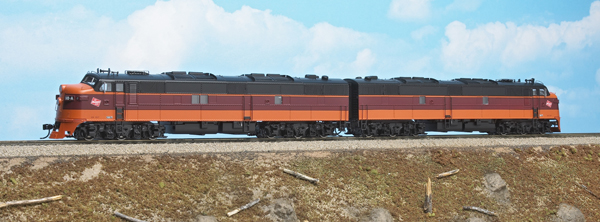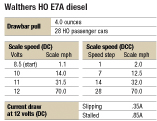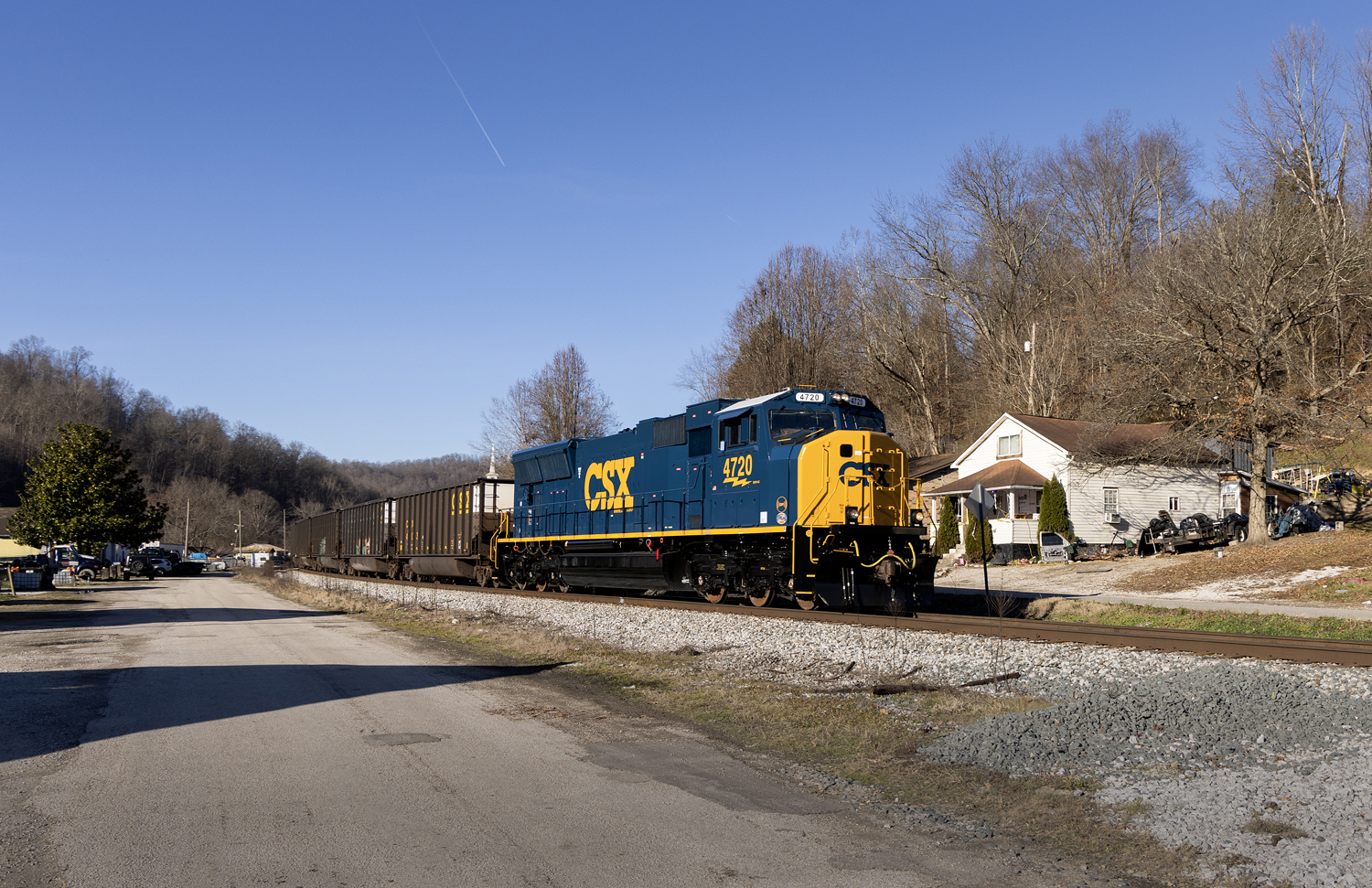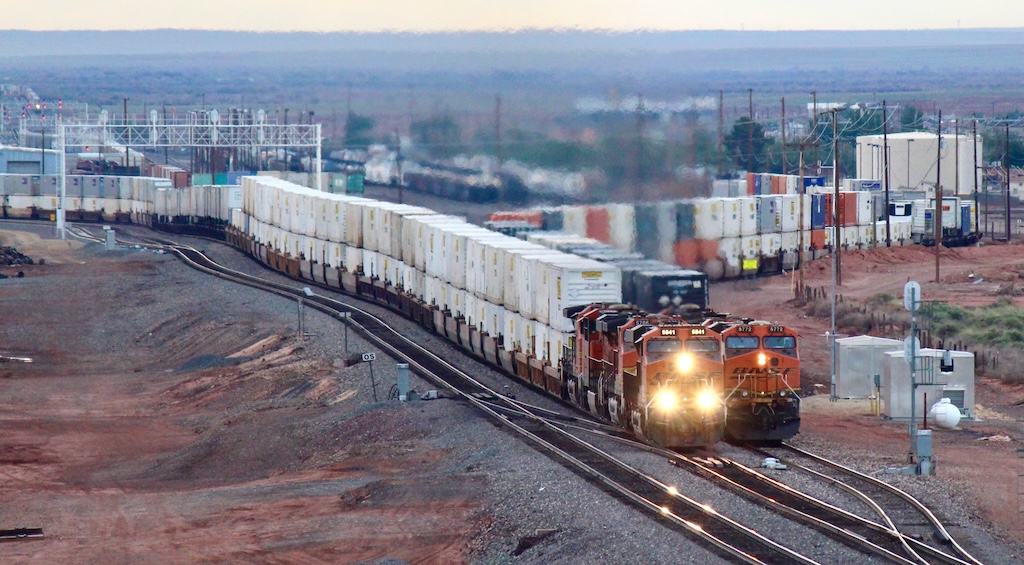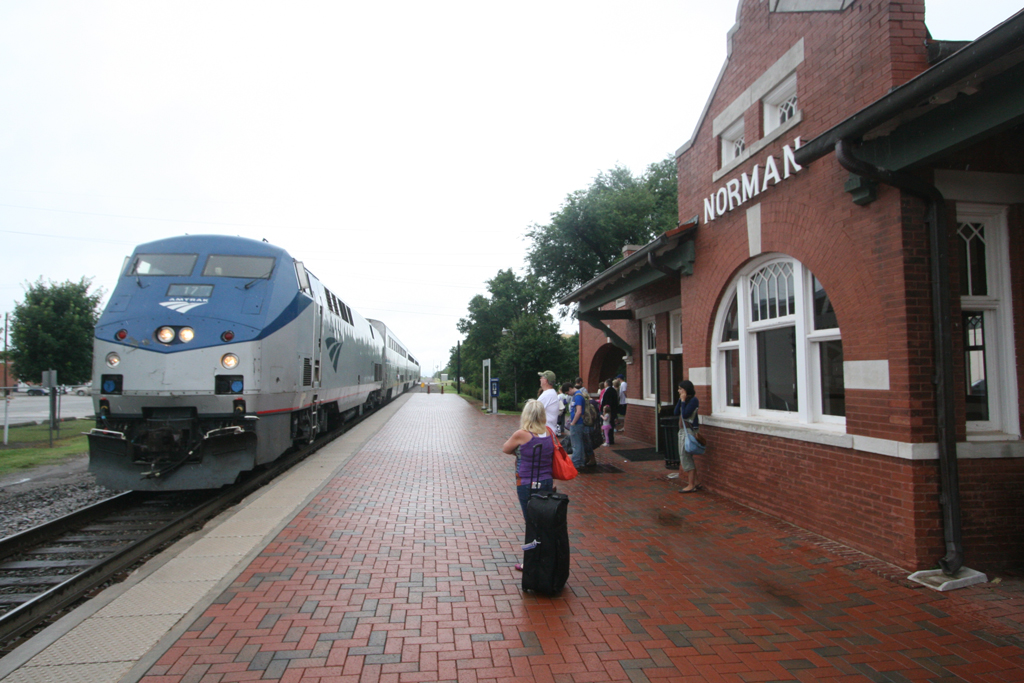Prototype. General Motors’ Electro-Motive Division introduced the E7 in 1945, and it became EMD’s all-time top-selling passenger locomotive. A total of 428 A units and B units were built for 30 North American railroads.
In the years following World War II the Milwaukee Road completely replaced steam power in Hiawatha service with five sets of E7As, as well as Fairbanks-Morse C-Liners and EMD FP7 diesels.
On the Milwaukee Road and other railroads around the country, 2,000-hp E7 diesel-electrics led passenger trains through the 1960s. Some E7s were still in service when Amtrak was formed in 1971.
The model. The Walthers HO scale model uses new, upgraded tooling compared to the Life-Like Proto 2000 model that we reviewed in the March 1997 Model Railroader. The E7 matches prototype dimensions in The Model Railroader Cyclopedia Vol. 2, Diesel Locomotives (Kalmbach Publishing Co., out of print). The highly detailed plastic body shell matches prototype photos of Milwaukee Road nos. 18A and 18B.
Separately applied parts include hand grabs, windshield wipers, and see-through grills. Prototype- specific details on the Milwaukee Road model include the large angled number boxes that were added by 1950. As on the prototype, the original small number boxes are intact but painted over.
Paint coverage on our sample is smooth and evenly applied. All lettering is straight and matches prototype photos. There are printed EMD builder’s plates on the bottom sill under the cab.
A five-pole skew-wound motor with brass flywheels is in the center of the die-cast metal frame. The motor drives the truck gearboxes through universal joints. With a drawbar pull of four ounces each, a pair of Walthers E7A units has no trouble hauling a full 10-car Twin Cities Hiawatha consist.
The DCC decoder is mounted on top of the frame. Two downward-facing speakers are located at the front and rear.
Sound and programming. The QSI Quantum sound decoder has sound and lighting effects in both DC and DCC operation. When moving forward the top Mars signal light operates, while the bottom headlight illumination is constant. The dual-speaker sound system delivers an impressive array of effects, including the distinctive rumble of the prototype’s 567A engines.
Factory set at maximum volume, the sound system caused the body shell to vibrate. The noticeable buzz didn’t diminish until the volume was lowered by half. I eliminated the buzzing by placing strips of electrical tape along the sides of the model’s frame.
You can trigger sound effects using a DC power pack, although a QSI Quantum Engineer (sold separately) makes it easier to operate and program the sound-equipped E7 on DC layouts.
Programming in DC mode includes adjusting the volume and adding momentum for more realistic starts and stops.
In DCC, the E7 supports 13 functions, including the horn, bell, and coupler crash. You can program individual lighting and sound effects. An extensive DCC instruction manual for the QSI Quantum decoder, including a list of all the programmable configuration variables (CV’s), as well as a separate advanced DC user’s manual is available on the Web at www.qsisolutions.com.
I wasn’t able to advance consist our two samples using the consist menus of my NCE Power Cab or the MRC Prodigy Advance DCC system in our workshop. Instead, I had to adjust individual CVs in each locomotive. I programmed CV19 to the consist address. (For the trailing unit running in reverse, CV19 equals the consist address plus 128). You’ll also need to program CV’s 21 and 22 for each locomotive depending upon which functions you want controlled by the consist address versus the individual locomotive addresses.
In DC, the model’s sounds and lights came on at 4 volts, but the E7 required a lot more voltage to get going. At 8.5 volts the model started moving smoothly at 1 scale mph. At 12 volts the E7 reached a top speed of 70 scale mph. This speed is a bit lower than that of the prototype, which could be geared for 85, 92, 98, or 117 mph.
I ran the model in DCC using an NCE Power Cab that delivers 13.5 volts to the track. The model started at 1 scale mph in speed step 1 and accelerated to a top speed of 70 mph. The QSI decoder supports 14, 28, or 128 speed steps.
Prototype-specific detail and accurate sounds make the Walthers E7 a standout HO scale diesel. Our pair of Milwaukee Road E7A locomotives looked and sounded great as they led the HO scale Twin Cities Hiawatha around our Milwaukee, Racine & Troy layout.
Price: DCC-sound-equipped: $249.98 to $259.98 (single A or B unit), $479.98 to $499.98 (A-A or A-B set). DC only: $159.98 to $179.98 (single A or B unit), $329.98 to $349.98 (A-A or A-B set)
Manufacturer
Wm. K. Walthers Inc.
P.O. Box 3039
Milwaukee, WI 53201
www.walthers.com
Road names: (A-A sets or single A units) Milwaukee Road orange/red/black or yellow/gray; Baltimore & Ohio; Chicago & North Western; Great Northern; Gulf, Mobile & Ohio; Seaboard Air Line. (A-B sets or single A or B units) New York Central; Pennsylvania; Southern Pacific; and Union Pacific. Undecorated versions also available
Features
All-wheel drive and electrical pickup
Die-cast metal Proto-Max operating knuckle couplers (at correct height)
Dual-mode DCC sound decoder with dual speakers (DCC version only)
Five-pole skew-wound motor with dual brass flywheels
Illuminated number boxes
Metal RP-25 contour wheels in gauge
Minimum radius: 18″
User-installed retractable-coupler pilots and crew figures
Weight: 19 ounces (A unit)





